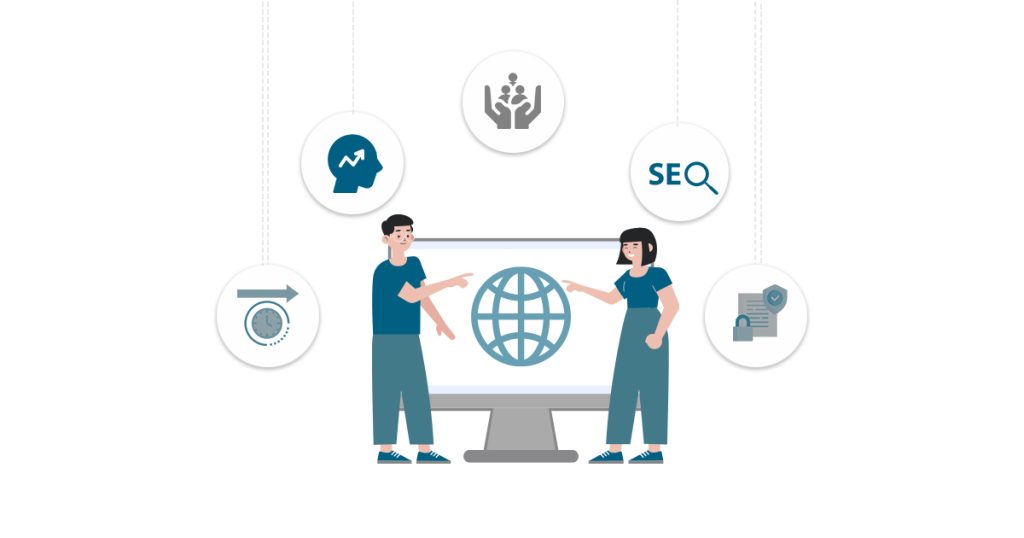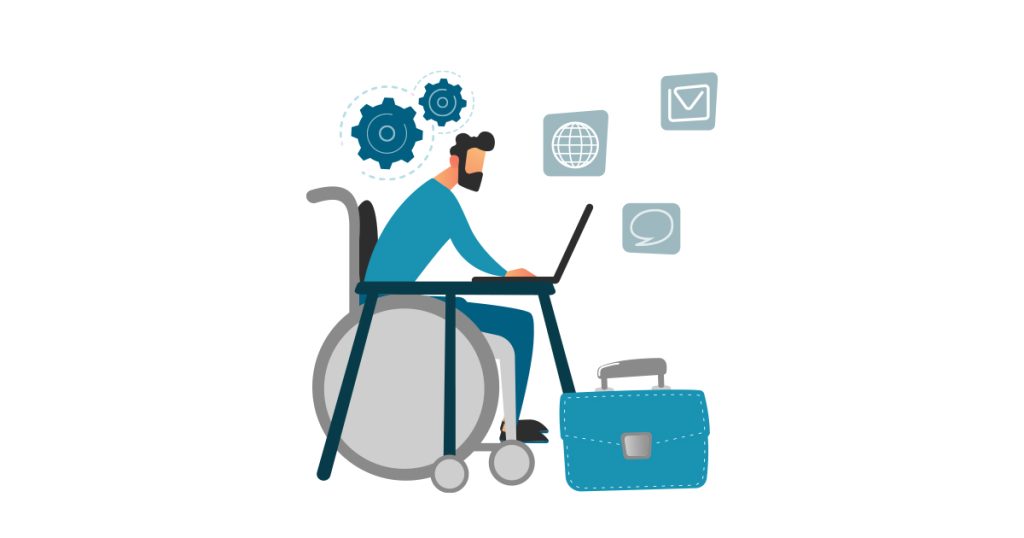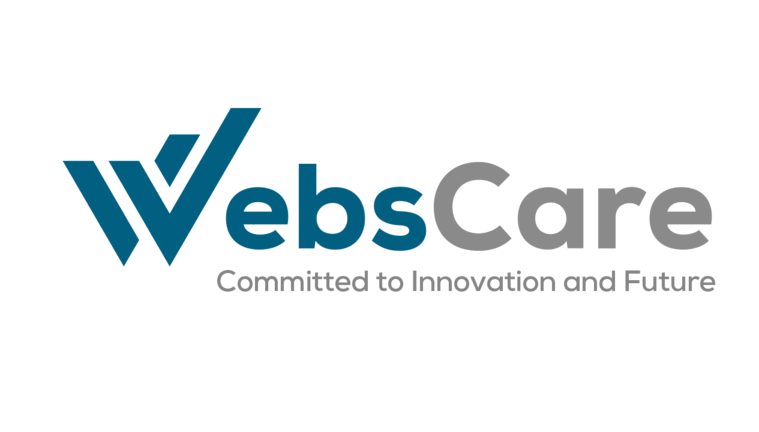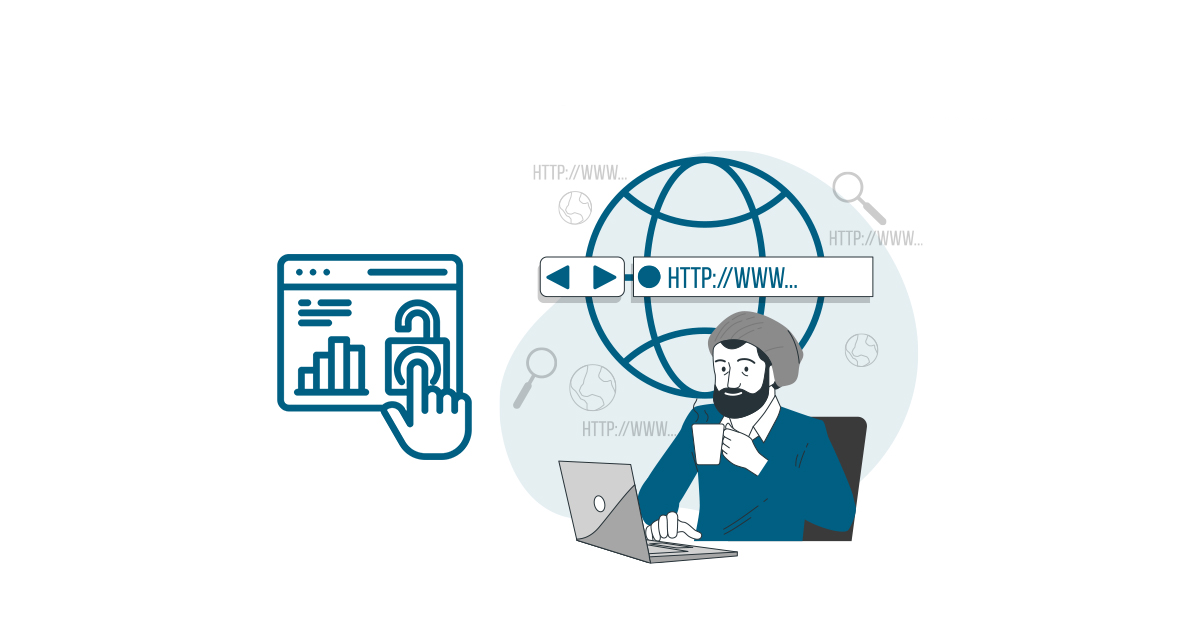Web accessibility is the practice of making websites and web applications usable by everyone including people with disabilities. Web accessibility is not just a legal obligation but a moral and strategic necessity. By implementing accessibility best practices, businesses and organizations can create inclusive digital experiences, enhance user engagement and expand their reach. It involves removing barriers that prevent people from accessing, understanding and interacting with the web. In this thorough article, our WebsCare research team has compiled all the reasons why web accessibility matters and how to achieve it.
What is Web Accessibility?
Web accessibility means making websites and web apps usable for people with disabilities. Most websites are either fully or partially inaccessible to them. For example, blind users or those with vision impairments use screen readers to navigate websites and PDF files. To support them, websites need adjustments to work with assistive technology. Many international laws require web accessibility to prevent discrimination against people with disabilities. These include Section 508 of the Rehabilitation Act, the Accessibility for Ontarians with Disabilities Act (AODA) and the European Accessibility Act (EAA). In the U.S., the Department of Justice (DOJ) has confirmed that the Americans with Disabilities Act (ADA) applies to websites and courts often enforce these rules for online spaces.
Why Web Accessibility Matters
Web accessibility matters for several important reasons

Curious about how web development is shaping Pakistan’s digital future? Let’s read more about it.
Inclusivity and Equal Access
Web accessibility ensures that people with disabilities including those with visual, auditory, motor and cognitive impairments, can navigate and interact with websites. This promotes inclusivity and equal access to information and services.
Legal Compliance
Many countries have established legal requirements for web accessibility such as the Americans with Disabilities Act (ADA) in the U.S. and the Web Content Accessibility Guidelines (WCAG) set by the World Wide Web Consortium (W3C). Non-compliance can lead to lawsuits, penalties and reputational damage.
Improved User Experience
Accessible websites enhance usability for everyone, not just those with disabilities. Features like clear navigation, keyboard shortcuts and readable fonts benefit all users including those in challenging environments or with temporary impairments.
SEO and Business Benefits
Search engines favor accessible websites. Properly structured content, alt text for images and semantic HTML improves search engine optimization (SEO), leading to better rankings. Plus, businesses that prioritize accessibility reach a wider audience including aging populations and individuals using assistive technologies.
Broader Audience
Accessible websites can reach a wider audience including the estimated 1 billion people worldwide with disabilities. This can lead to increased traffic, customer base and revenue.
Corporate Social Responsibility
Demonstrating a commitment to accessibility can enhance a company’s reputation and show that it values social responsibility and ethical practices.
Avoiding Legal Risks
Non-compliance with accessibility standards can lead to legal challenges and lawsuits which can be costly and damaging to a company’s reputation.
Future-Proofing
As the population ages, the number of people with disabilities is likely to increase. Making websites accessible now prepares businesses for future demographic changes.
Innovation
Focusing on accessibility can drive innovation, leading to new technologies and solutions that benefit all users. Ensuring equal access to information and services is a fundamental human right. It’s the right thing to do to ensure that no one is excluded from participating in the digital world.
How to Achieve Web Accessibility
Achieving web accessibility involves a combination of design, development and content strategies to ensure that websites are usable by everyone including people with disabilities. Here are some key steps and best practices to achieve web accessibility, mentioned as below:

Follow WCAG Guidelines
Web Content Accessibility Guidelines (WCAG) provide a comprehensive framework for creating accessible websites. The key principles include content that must be presented in ways users can perceive (e.g., providing text alternatives for non-text content). Users must be able to navigate and interact with the site (e.g., keyboard accessibility). Content should be readable and predictable (e.g., clear instructions and simple language). The website should be compatible with assistive technologies.
2. Use Semantic HTML and ARIA
Using proper HTML tags (e.g., <header>, <nav>, <button>) improves accessibility by providing meaningful structure. ARIA (Accessible Rich Internet Applications) attributes can enhance interactions for screen readers. Some interactive components (like custom dropdowns, sliders, or modals) don’t work well with assistive technologies. ARIA helps by adding additional roles, states, and properties that provide context to screen readers.
3. Provide Text Alternatives
Images, videos and other media should have descriptive alt text and captions. This helps visually impaired users understand content and improves SEO. Users in low-bandwidth situations (where images fail to load) can still understand the content. Web accessibility laws (such as WCAG and ADA) require text alternatives for non-text elements.
4. Ensure Keyboard Accessibility
Keyboard accessibility ensures that users can navigate and interact with a website without a mouse, using only a keyboard or assistive technologies like screen readers and switch controls. This is essential for people with motor disabilities, visual impairments and power users who rely on keyboard shortcuts.
5. Test with Assistive Technologies
Testing with assistive technologies ensures that people with disabilities can navigate, understand, and interact with your website. Assistive technologies help users with visual, auditory and motor impairments access digital content effectively. Use screen readers, voice commands and accessibility testing tools like WAVE or Lighthouse to identify and fix accessibility issues.
6. Offer Adjustable Display Settings
Allow users to adjust font size, contrast and color settings to improve readability. Providing a dark mode and dyslexia friendly fonts can enhance user experience. This is especially beneficial for people with visual impairments, cognitive disabilities and reading difficulties as well as users who prefer different contrast levels or text sizes.
7. Conduct Regular Audits
Web accessibility is an ongoing process. Regular audits, user feedback and updates help maintain and improve accessibility standards over time. Websites frequently change due to content updates, new features and redesigns, so continuous testing is essential to maintain accessibility.
Searching for the best web development tools? Let’s find the top 8 tools to optimize your workflow and enhance productivity!
Conclusion
Web accessibility goes beyond mere compliance; it is about fostering an inclusive digital environment where everyone, regardless of their abilities, can engage, navigate, and interact without barriers. By adhering to the Web Content Accessibility Guidelines (WCAG), implementing industry best practices, and continuously refining digital experiences, businesses and developers can create websites that are not only accessible but also intuitive, efficient, and welcoming for all users. Ensuring accessibility benefits individuals with disabilities, enhances user satisfaction, improves search engine rankings, and expands market reach. Moreover, prioritizing accessibility fosters social responsibility, strengthens brand reputation, and contributes to a more equitable digital future. By making accessibility a core principle of web development, organizations can drive innovation, promote inclusivity, and ensure that the Internet remains a space where everyone can participate equally.


